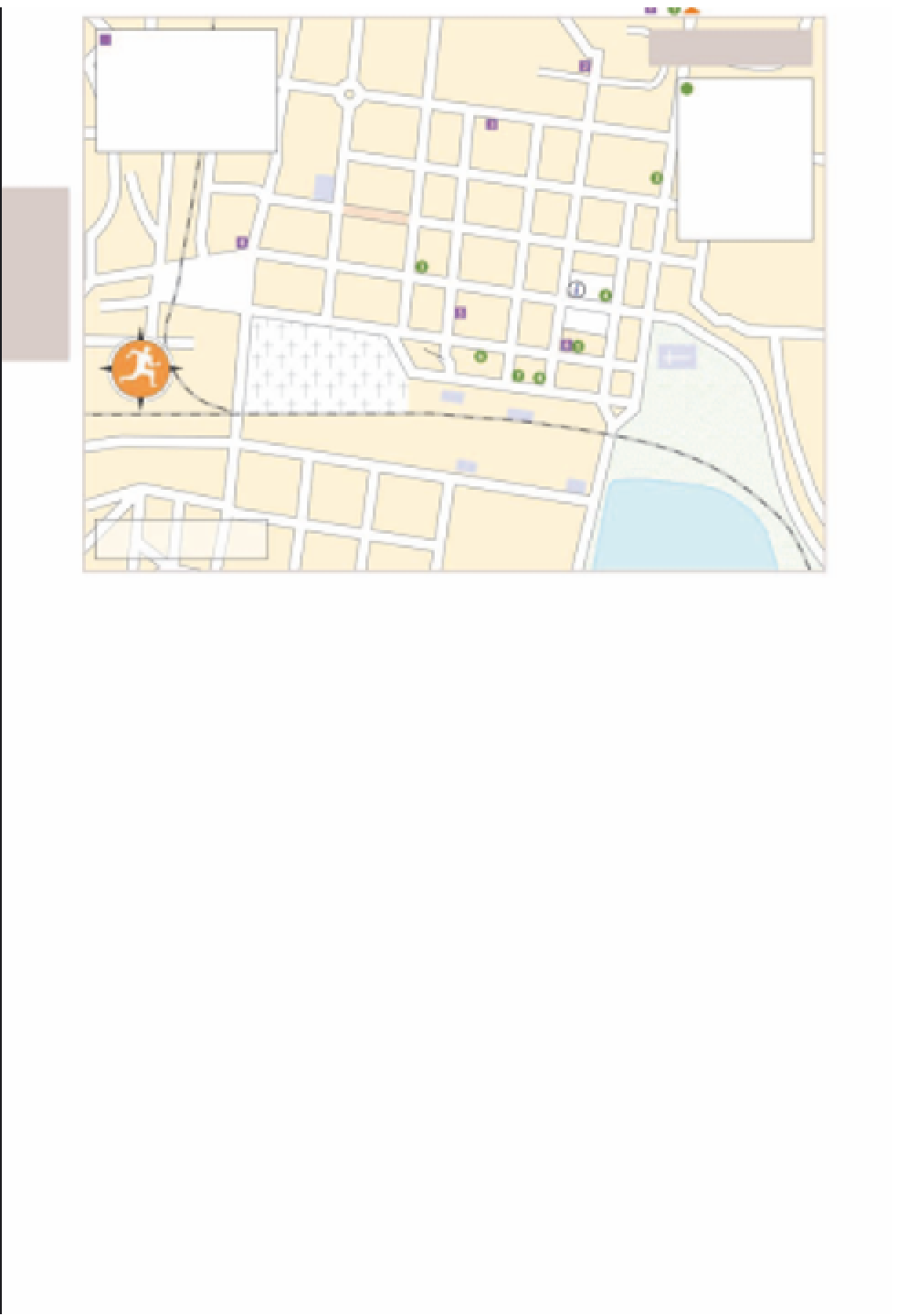Travel Reference
In-Depth Information
Kronobergs Slott, Evedal, &
ACCOMMODATION
Best Western Royal Corner
Clarion Collection Cardinal
Elite Stadshotell
Esplanad
Evedals Camping
Värend
Växjö Vandrarhem
VÄXJÖ
4
5
6
3
1
2
1
BARS, CAFÉS
& RESTAURANTS
Bishops Arms
Broqvists
Evedals Värdshus
Gräddhyllan
Harry's
Kafe de Luxe
PM & Vänner
Royal Thai
Venezia
5
4
1
6
8
6
3
7
2
Library
6
VÄSTRA-
TORGET
N
STORTORGET
BÅTMANSTORGET
Tegnér
Cemetery
Domkyrkan
Bus
Station
Train Station
Linnéparken
Smålands
Museum
Utvandrarnas
Hus
0
500
Växjösjön
metres
Smålands Museum
Södra Järnvägsgatan 2 • June-Aug Mon-Fri 10am-5pm, Sat & Sun 11am-5pm; Sept-May closed Mon • 50kr including Utvandrarnas Hus
•
W
smalandsmuseum.se
The best place to kick of your exploration of Växjö is the
Smålands Museum
, behind
the train station, which holds two permanent exhibitions: a history of Småland during
the nineteenth and twentieth centuries, with a section dedicated to Växjö, and the
infinitely more interesting “Six Centuries of Swedish Glass”. The latter shows sixteenth-
century place settings, eighteenth- and nineteenth-century etched glass and stylish Art
Nouveau-inspired pieces, with subtle floral motifs. “Trees in Fog”, designed in the
1950s by Kosta designer Vicke Lindstrand, illustrates just how derivative so much of
the twentieth-century work actually is. Look out, in particular, for the
Absolut
vodka
bottles made in nearby Limmared, which formed the basis of today's design.
Utvandrarnas Hus
House of Emigrants • May-Aug Tues-Fri 9am-5pm, Sat & Sun 11am-4pm; Sept-April Tues-Fri 9am-4pm, Sat & Sun 11am-4pm • 50kr
including Smålands Museum •
T
0470 201 20,
W
utvandrarnashus.se
In a plain building directly in front of the Smålands Museum, the inspired
Utvandrarnas
Hus
explores the intense hardship faced by the Småland peasant population in the
mid-nineteenth century and their ensuing emigration; between 1850 and 1929, one
quarter of Småland's population left to begin a new life in America.
The displays
he museum's
displays
, which include English-language translations and audio
narratives, trace the lives of individual emigrants and recount the story of the industry
that grew up around emigration fever. Most boats used by the emigrants left from
Gothenburg and, until 1915, were British-operated sailings to Hull, from where
passengers crossed the Pennines to Liverpool by train to board the transatlantic ships;
conditions on board the ships were usually dire and the emigrants often shared their
accommodation with oxen, pigs, calves and sheep. Exhibitions change frequently but

































































